Ship's Office - Neat Stuff - Picture Gallery |
||
Guided Missile School, Dam Neck, Virginia |
||
|
|
||
| After World War II - the United States Navy was very interested in furthing the development of the missile technology they had "inherited" from Germany at the end of the war. Germany had not only developed practical missile born weapon delivery systems - but mobile launch facilities to make them even harder to detect and defend against. The Navy wanted to expand upon that - by taking missiles to sea - and of course the ultimate "stealth" launch platform was a submarine. By the early 1950s the Navy was fully envolved in the development of missile technology for deployment at sea.
Recognizing that once such weapons systems were deployed, sailors would be required to perform maintenance on both the weapons themselves and the launch systems - a school would be needed to train them. The Navy began a search for a suitable facility - one that would have room and a low profile from a security perspective. The Fleet Anti-air Warefare Training Center at Dam Neck fit the bill. It had available capacity with the reductions made after WWII; and it's location on a very secluded beach south of Virgina Beach, Virginia made was indeed low key - in fact few people in the area were even aware of what was "out there" beyond some vauge notion of being some Navy training base. In July 1952 the Navy's Guided Missile School was established using existing buildings for the first phase of training (a specialized version of the Navy's Electronics "A" School) - while new buildings were built to house more modern and complex facilites dedicated to the special needs of missile technology, handling and maintenance. At first - the US Navy experimented with "conversions" based on the German V1 "buzz-bomb" with the early "Loon" missile (first launched in 1947). Later Regulus came into use - first aboard surface craft - then in 1953 aboard USS Tunny becoming America's first submarine launched guided missile. By this time GMS Dam Neck was in full operation. By the mid 1950s - the Navy had already looked at several submarine launched missile systems - ranging from more modern "hanger" type submarines launching larger - but similar designed cruise type missiles to the Regulus already deployed - to huge submarines large enough to cary and launch 4 giant ICBMs (Navy Jupiter type) . The Navy was concerned about the liquid fueling systems of all of these types of missiles - plus the need to surface to launch them. All of these were abandoned in favor of smaller solid fueled design that could be launched from below the surface. This system became the Polaris missile system, which was begun in 1956. When the Soviet Union first "threatened"* the United States with it's new ICBMs - (advertised by the launch of Sputnik I in October 1957 powered into orbit by one of their ICBM capable missiles) Polaris was the only deterrent that could effectively answer the threat - but of course - it was still a long way from being "deployable". Since niether the Air Force nor the Army had even a plan - President Eisenhower elevated the priority of the Polaris program to the highest level. To meet this urgent need - it was decided to take five nuclear attack submarines under construction and turn them into FBMs. By using submarines already under constuction - several years could be saved in getting the Polaris system deployed. Those submarines were a combination of all that the navy had learned about nuclear propulsion, ultra quiet and efficient hull design, and new and extraordinarily sophisticated technologies in weapons and navigation. Now - in addition to those systems - were being added new missiles, fire control and navigation systems at the cutting edge of technology. So advanced, in fact - that no training programs existed that could adequately train the technicians needed to operate, repair and maintain those systems. The Navy had already established several nuclear training programs at Charleston and Mare Island (among others), but needed a training facility dedicated to the new ballistic missiles and their guidance and navigation systems.
| ||
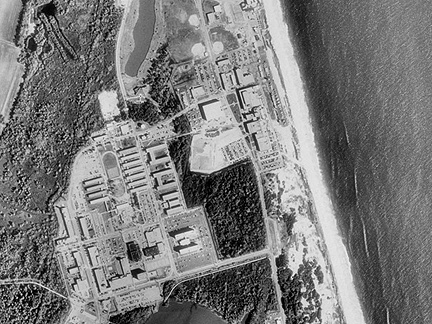
| The answer, of course - was to expand the courses and facilities at the Guided Missile School, Dam Neck. Some of the old buildings were quite suitable for traditional class rooms - and the barracks - while old - were quite serviceable and comfortable. These were used for the first six months of training which prospective technicians would attend - a somewhat "tuned" version of Navy Electronics "A" school. Towards the south end of the complex of buildings - were the newer and "special" built buildings where the graduates from "A" school - as well as fleet sailors returning for additional training would attend various "C" schools - where the various "specialties" of technicians would learn their craft. Missile Technicians would learn various parts of the Polaris (and later Posiden and Trident) missiles from propulsion and navigation, to handling / testing, REB/Payload, etc. | |
| Fire Control Technicians would learn the interface and control systems that would interconnect the missile with the submarine's power, navigation and control systems. Electronics Technicians would learn the various Navigation Systems such as SINS (Ships Inetrial Navigation System) - and the systems that supported the SINS such as NavAides (Loran A & C, SRN Satelite, BRN Sonar, etc.) and Digital Techs which worked on the NAVDAC computer system that interface all of the Navigation data to the rest of the boat (including to Fire Control for the missiles).
It's been estimated that over it's 40 year contribution to the fleet - more than 30,000 techs were trained in one of the "C" schools at GMS Dam Neck. The "down-sizing" of our fleets saw the end of GMS in March, 1994. However - even to this day - much of the "facilities" are still visible - though empty. As many of us spent a year (and some spent much more) at Dam Neck - it's fitting that it be remembered "somewhere". |
||
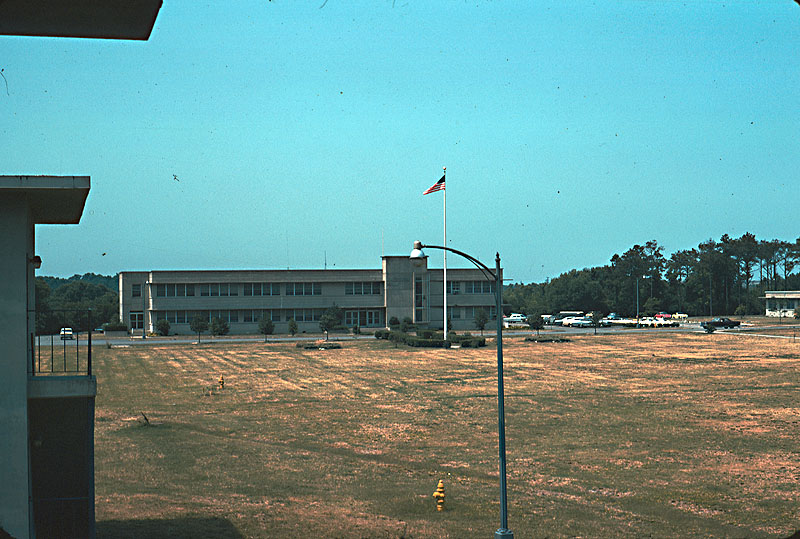 |
||
| Administrative Building at the north end of the main complex area. The Dispensary is just visible at the right. | ||
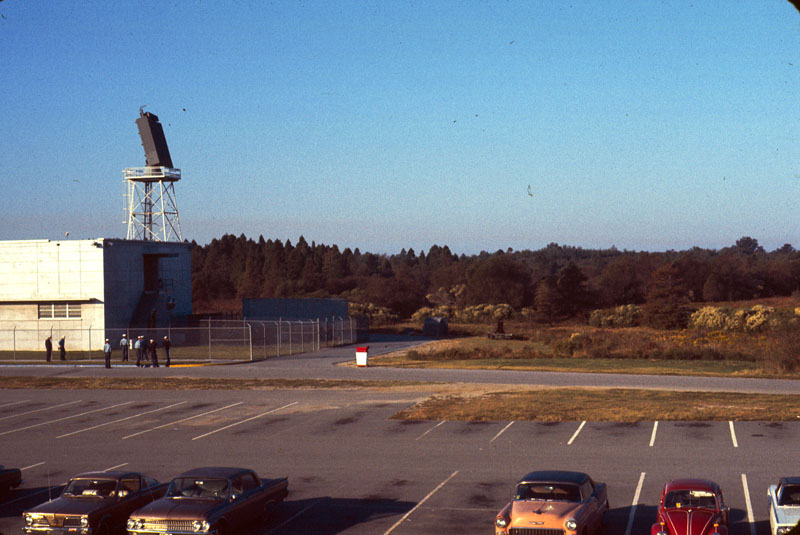 |
||
| Turning towards the west - looking just past the old barracks is one of the parking lots for the barracks - and the end of one of the training buildings which contained Anti-Aircraft RADAR training classes. | ||
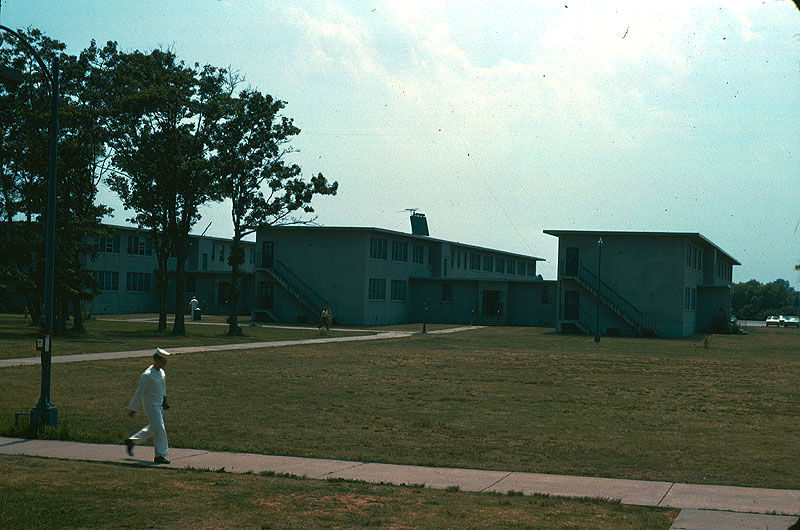 |
||
| Backing up a bit - three of the old barracks - and the RADAR on the Anti-Aircraft RADAR training building. | ||
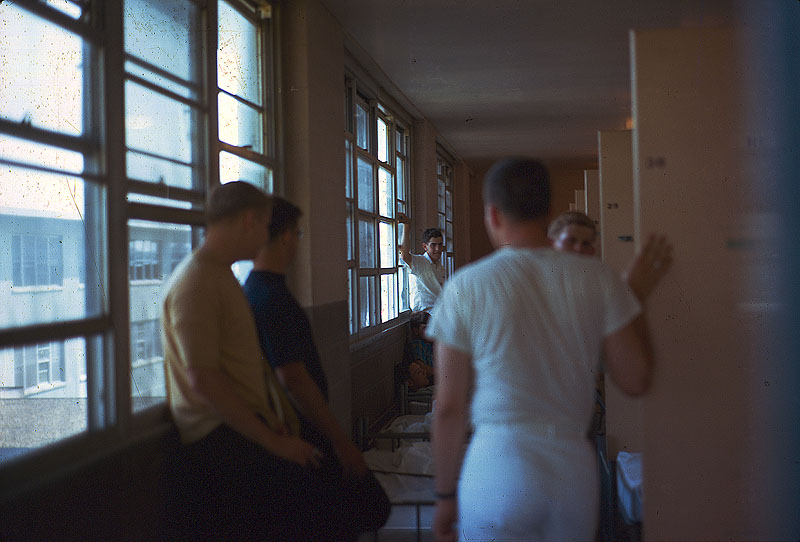 |
||
| Field Day inside one of the old barracks. The partitions formed "cubicles" in which two people were berthed. The "racks" were pulled out into the passageway so that the floors could be scrubbed and waxed. | ||
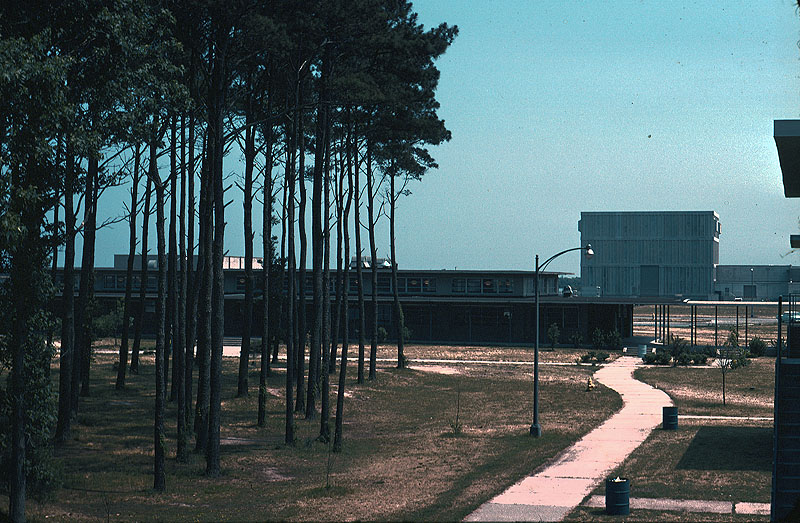 |
||
| Looking south - the mess hall is in the foreground, left - while some of the GMS "C" schools buildings are seen in the background. The tall buildings allowed for handling the various weapon systems "hands on" while keeping out of the weather - and out of sight of prying eyes. | ||
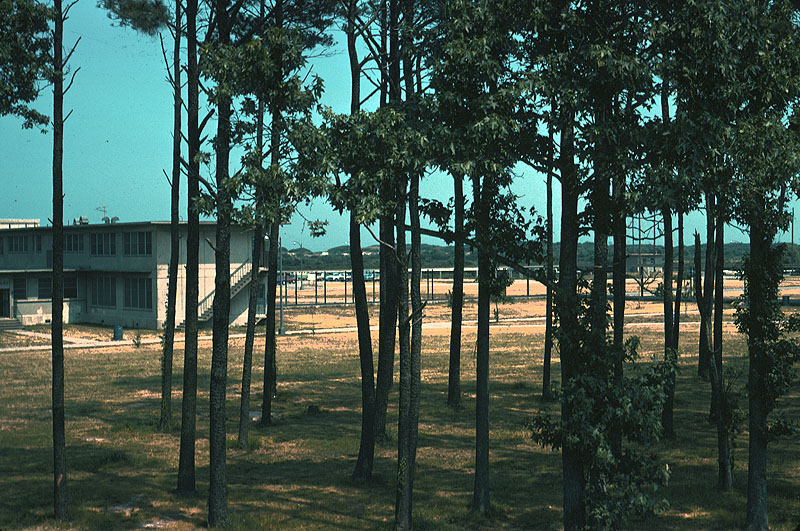 |
||
| Turning further counter clockwise - the "eastern set" of old barracks is across the courtyard; the drone launching facility is just beyond the dunes; the HAM Radio shack is to the right. | ||
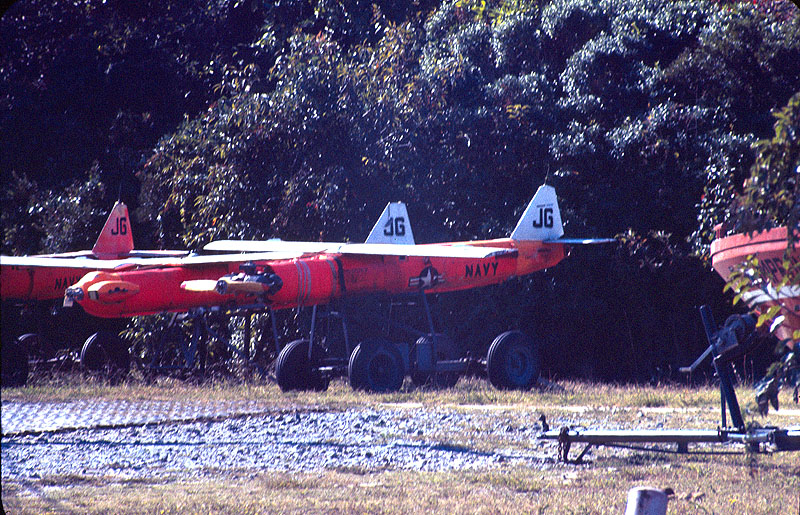 |
||
| Three of the drones at the done maintenance and launching facility. These were flown as practice targets for the Anti-Air Warfare students learning the RADAR fire control systems. They were *supposed* to dial in an error of a few degrees so that their shots (yes real live 5inch stuff) would explode just behind the drones. Unfortunately (much to our delight) they would forget to dial in the lag error... and OOPS... | ||
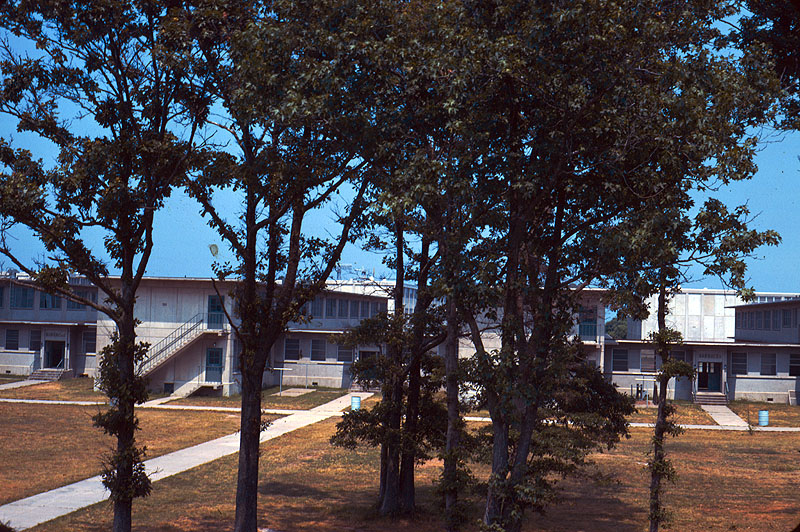 |
||
| Back in the court yard, and Turing toward the east the "eastern set" of the old barracks - with the new barracks visible in the background. If you look closely over the rooftops - just left of center of the picture - one of the Ant-Air Warefare RADAR antennas can be seen. | ||
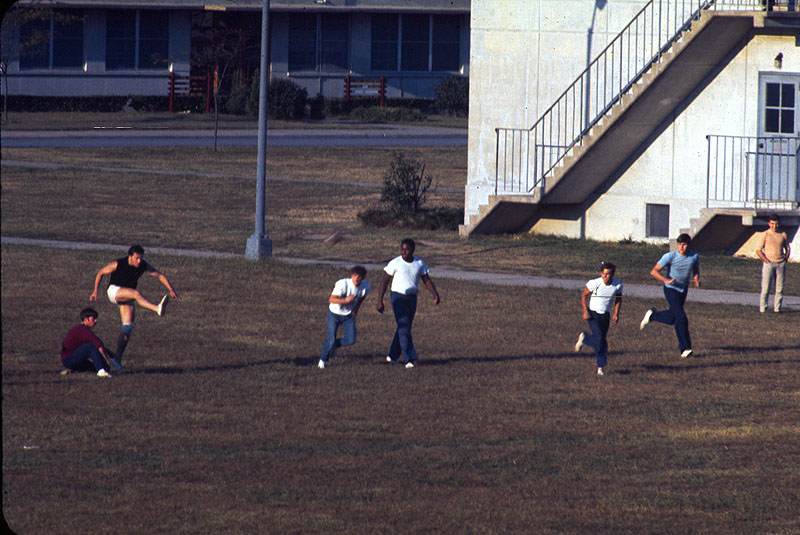 |
||
| Turing on around nearly full circle in the court yard - a football game is underway. Note that this was before the track and associated facilities were put in. Also note the dispensary in the background. | ||
 |
||
| Fourth of July, 1970 at Dam Neck. Special Services put on a huge picnic for all hands. The parade was well attended - one of the contestants for "Miss Independence Day" is passing by for "inspection". This was on the ball park area just north of the hobby shops / special services area. | ||
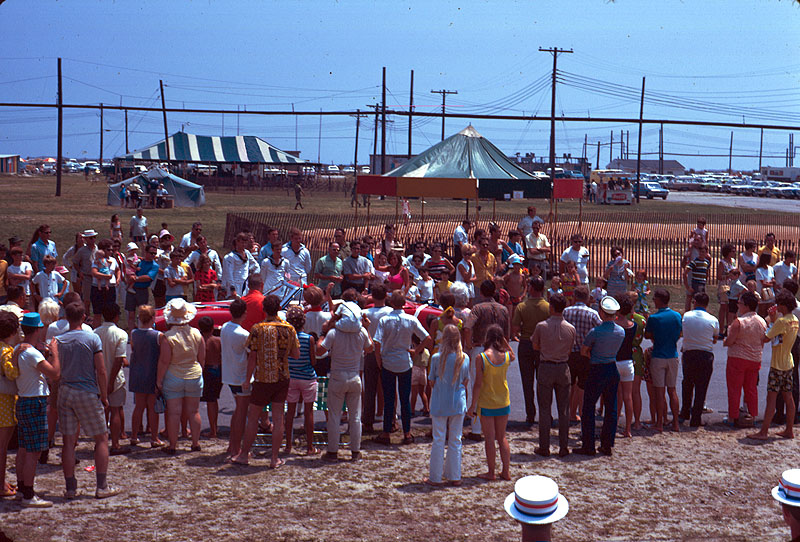 |
||
| Another contestant for "Miss Independence Day". | ||
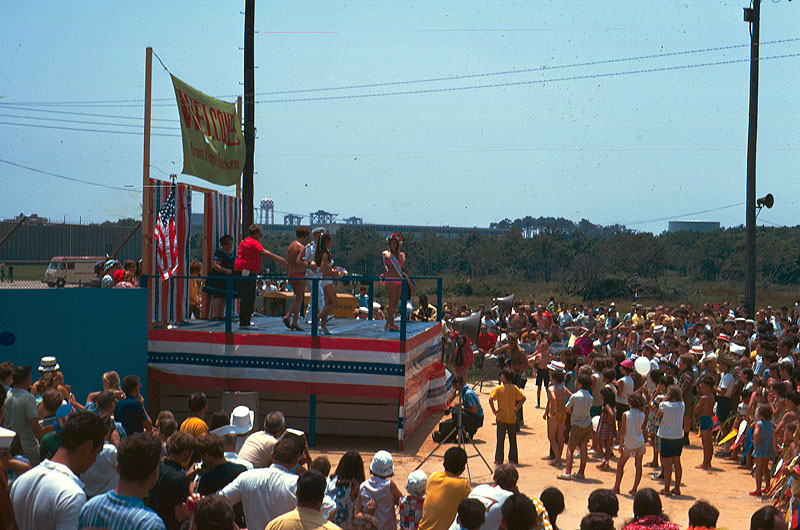 |
||
| IF you can get past the crowning of the winner of the "Miss Independence Day" contest - you can see several of the GMS school buildings in the background. (yeah - I know - at this point who cares... OK... get I the message!) | ||
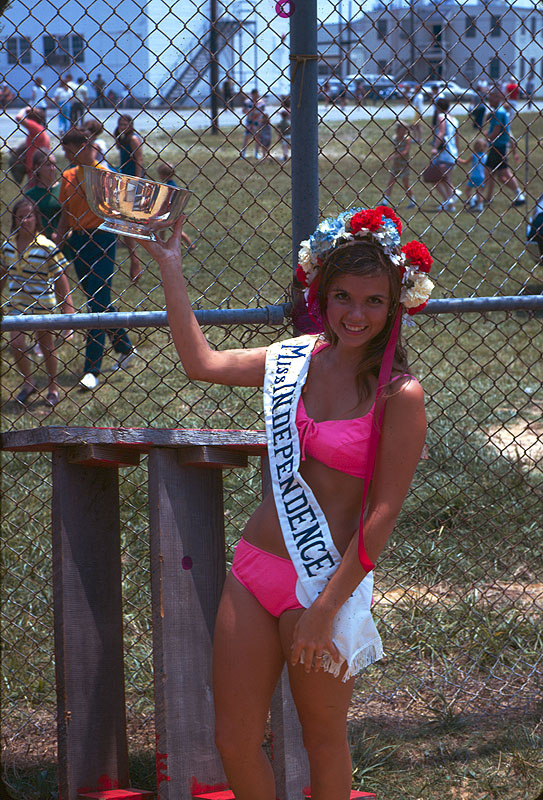 |
||
| If you can get past "Miss Independence Day" - Special Services Hobby shops are in the background. At the time I was running the electronics hobby shop - so had the key to that building. When it started raining that evening - and "Miss Independence Day" was waiting for her ride - it was nice to have a dry place to chat with her for a few minutes. I was really impressed that she was so down to earth and kind to "just another swab" she happened to run into one day.... especially a day which would have swelled many other's egos... | ||
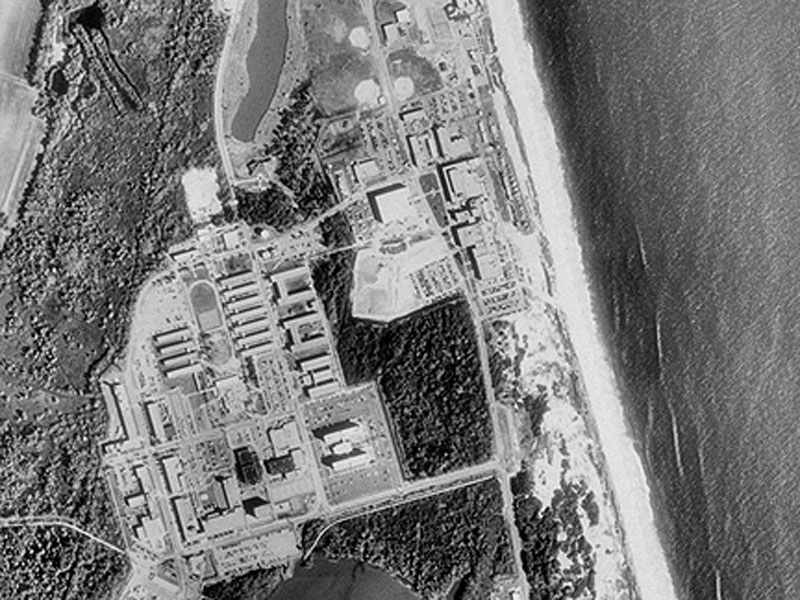 |
||
| A comparison of Dam Neck then and now... The monochrome image is thought to be from the mid 1970's or so. The color image is relatively current. As you can see - new barracks where the old ones were... and a LOT of new buildings here and there. (color map courtesy Google Maps). | ||
|
|
||
| return to TenderTale Main Page | ||
|
|
||
| Copyright © 2006 Common Cents Computers - except last map copyright © 2006 Google Maps | ||